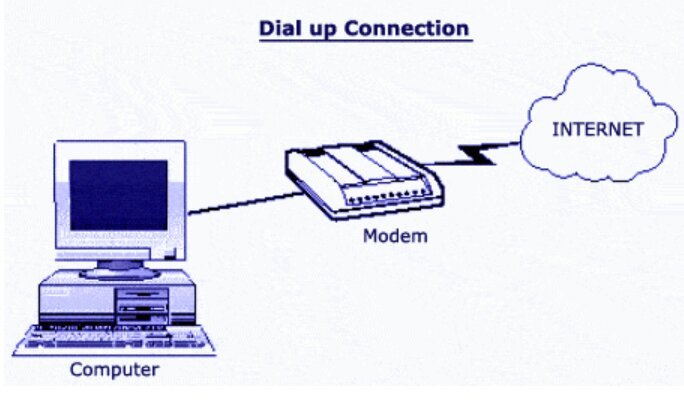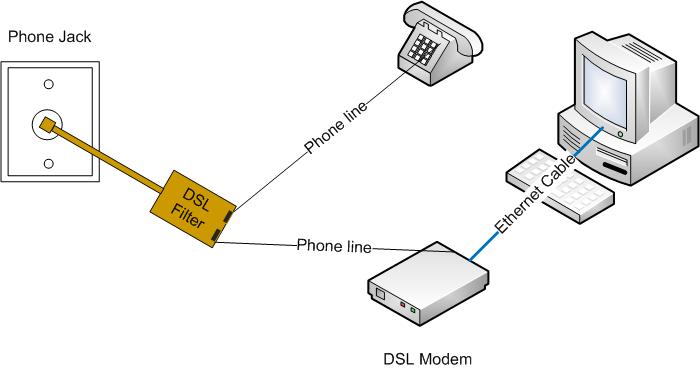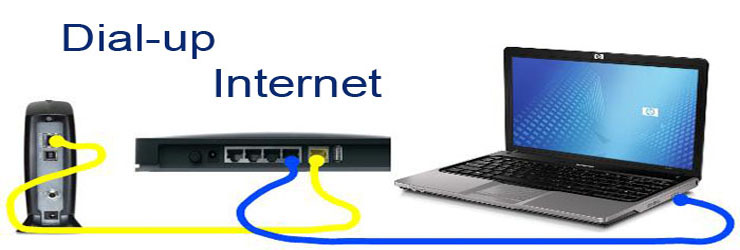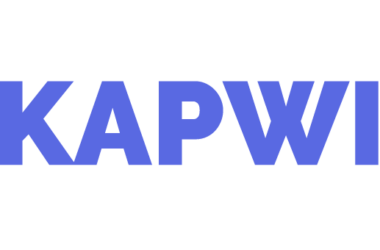Embarking on a journey beyond the sluggish tones of dial-up internet, users seek dynamic alternatives that propel them into the digital era with speed, reliability, and versatility. In this exploration, we delve into the world of high-speed dial up internet alternatives, dissecting their features, advantages, and the crucial factors to consider when choosing the perfect alternative. Bid farewell to the limitations of dial-up as we navigate through cutting-edge options that promise to redefine your online experience.
Exploring Dial-Up Internet: Features and Limitations

Dial-up internet, a relic of the past, once dominated the online landscape. Its distinctive sounds and slow connection speeds are etched in the memories of those who experienced the early days of the internet. In this article, we delve into the features and limitations of dial-up internet, exploring what sets it apart and why there’s a growing need for dial up internet alternatives.
Features of Dial-Up Internet
- Modem-Based Connection: Dial-up operates on a modem-based connection, relying on modems to convert digital data into analog signals. Users connect to the internet by dialing a specific phone number, and the modem establishes a temporary link.
- Affordable Access: One of the key features that made dial-up appealing in its prime was its affordability. It provided a cost-effective way for users to get online without breaking the bank, making it accessible to a broad demographic.
- Widespread Availability: Dial-up’s infrastructure was designed to be widely available. In the early days of the internet, it brought online connectivity to areas where other options were impractical, reaching remote and rural locations.
- Simplicity in Setup: Setting up a dial-up connection was relatively simple. Users needed a computer, a modem, and a standard telephone line. This simplicity contributed to its popularity among early internet adopters.
Limitations of Dial-Up Internet
Despite its accessibility and affordability, dial-up comes with a set of limitations, including:
- Slow Connection Speeds: Perhaps the most glaring limitation of dial-up is its slow connection speeds. With typical speeds ranging from 28.8 kbps to 56 kbps, browsing the internet on dial-up feels sluggish compared to the high-speed connections we have today.
- Disruption of Phone Lines: Using dial-up ties up the phone line, making it unavailable for voice calls while connected to the internet. This limitation often led to conflicts between internet use and the need for telephone communication.
- Limited Bandwidth: Dial-up offers limited bandwidth, making it impractical for activities that require substantial data transfer, such as streaming videos, downloading large files, or engaging in online gaming.
- Prone to Interference: Dial-up connections are susceptible to interference, leading to disruptions in the form of line noise or disconnections. Factors like poor line quality or interference from other electronic devices could impact the user experience.
- Incompatibility with Modern Applications: The slow speeds and limited bandwidth of dial-up makes it incompatible with many modern applications and services that demand faster connections. Activities like video conferencing and accessing multimedia-rich websites become challenging.
- Technological Obsolescence: As technology progressed, dial-up became increasingly obsolete. Newer dial up internet alternatives emerged, offering faster, more reliable connections, leaving dial-up in the technological rearview mirror.
Why Seek Dial Up Internet Alternatives?

As technology advances, the limitations of dial-up internet become more pronounced, pushing users to explore dial up internet alternatives that offer enhanced experiences. Let’s break down the reasons why individuals are increasingly seeking dial up internet alternatives:
1. Need for Faster Connection Speeds
In today’s fast-paced digital landscape, speed is paramount. Users demand faster internet connections to seamlessly browse, stream, and engage in online activities without the frustrating delays associated with dial-up. As the internet becomes a central hub for work, entertainment, and communication, the necessity for rapid data transmission has become a driving force behind the search for dial up internet alternatives.
The demand for speed extends beyond simple webpage loading; it encompasses bandwidth-hungry applications and services that thrive on swift and consistent connectivity. From streaming high-definition content to participating in real-time online gaming, users seek dial up internet alternatives that can provide the requisite speed for a more immersive and efficient online experience.
2. Increased Dependence on Bandwidth-Intensive Applications
The rise of bandwidth-intensive applications, such as high-definition streaming, online gaming, and video conferencing, necessitates alternatives that can handle these data-heavy activities more efficiently than dial-up. Dial-up’s limited bandwidth struggles to keep pace with the demands of contemporary digital lifestyles, leading users to explore dial up internet alternatives that offer the necessary bandwidth for smooth and uninterrupted usage.
High-quality video streaming, for example, requires substantial data transfer rates to deliver crisp visuals without buffering interruptions. As users integrate these applications into their daily routines, the need for dial up internet alternatives capable of handling the increased data loads becomes paramount.
3. Multifunctional Connectivity Requirements
Modern users often require simultaneous internet access for multiple devices. Dial-up’s limitation in supporting multiple connections simultaneously prompts users to seek dial up internet alternatives that can accommodate the growing number of devices in today’s connected households. With the proliferation of smartphones, tablets, laptops, smart TVs, and other internet-enabled devices, a multifunctional and robust internet connection is no longer a luxury but a necessity.
Alternatives that can efficiently manage multiple devices without compromising on speed or stability become attractive options. Whether it’s working on a laptop, streaming content on a smart TV, or conducting a video call on a tablet, users seek dial up internet alternatives that provide seamless connectivity across various devices simultaneously.
4. Technological Evolution and Innovation
As technology evolves, users are drawn to alternatives that embrace innovation. The rapid progression of internet technology leaves dial-up behind, and individuals seek dial up internet alternatives that offer not only speed but also compatibility with the latest advancements in online services and applications. The landscape of online platforms and services constantly evolves, introducing new features and capabilities that enhance the digital experience.
Users gravitate towards alternatives that position them at the forefront of technological innovation. Whether it’s the integration of artificial intelligence, enhanced security protocols, or support for emerging standards, seeking dial up internet alternatives allows users to future-proof their internet experience and stay abreast of the latest developments in the online realm.
Commonly Used Dial Up Internet Alternatives

1. DSL (Digital Subscriber Line)
DSL, short for Digital Subscriber Line, stands out as a formidable dial up internet alternative, revolutionizing the way users connect to the internet over existing telephone lines. This technology offers a significant improvement in speed, providing a faster and more reliable internet experience. DSL allows users to use their telephone line for voice calls concurrently while enjoying a stable internet connection, addressing a key limitation of dial-up.
Advantages of DSL:
- Enhanced Speeds: DSL provides faster connection speeds compared to dial-up, making it suitable for various online activities, including streaming and online gaming.
- Simultaneous Use: Unlike dial-up, DSL enables users to use the internet and make voice calls simultaneously, eliminating the need to choose between internet access and telephone use.
- Widespread Availability: DSL is widely available in urban and suburban areas, offering users a viable dial up internet alternative without geographical constraints.
2. Cable Internet
Cable internet utilizes coaxial cables to deliver high-speed internet, making it a popular choice for users seeking a dial up internet alternative. With faster download and upload speeds, cable internet provides a more responsive online experience, particularly beneficial for activities that demand considerable data transfer.
Advantages of Cable Internet:
- High-Speed Connectivity: Cable internet offers higher speeds compared to dial-up, facilitating smooth browsing, faster downloads, and improved streaming quality.
- Consistent Performance: Cable internet provides a more consistent and reliable performance, reducing latency and buffering during online activities.
- Broad Coverage: Cable internet is widely available in urban and suburban areas, providing extensive coverage for users seeking a reliable and fast connection.
3. Fiber-Optic Internet
Fiber-optic internet represents the pinnacle of high-speed connectivity, utilizing light signals transmitted through optical fibers. As a dial up internet alternative, fiber-optic internet offers unparalleled speed and reliability, catering to users with demanding internet needs.
Advantages of Fiber-Optic Internet:
- Blazing Fast Speeds: Fiber-optic internet delivers exceptional speeds, making it ideal for bandwidth-intensive activities such as 4K streaming and large file downloads.
- Reliability: The use of optical fibers enhances the reliability of the connection, reducing the likelihood of disruptions or slowdowns.
- Low Latency: Fiber-optic internet provides low latency, ensuring a responsive online experience crucial for online gaming and video conferencing.
4. Satellite Internet
Satellite internet serves as a viable dial up internet alternative, particularly in remote areas where traditional broadband options are limited. It utilizes satellite signals to establish a connection, offering users in geographically isolated regions access to the benefits of high-speed internet.
Advantages of Satellite Internet:
- Wide Coverage: Satellite internet reaches areas where other dial up internet alternatives may be impractical, providing a solution for users in remote and rural locations.
- Stable Connection: Once established, satellite connections tend to be stable, allowing users in remote areas to access a reliable internet connection.
- Global Accessibility: Satellite internet has a global reach, making it a potential solution for users in various parts of the world.
5. Fixed Wireless Internet
Fixed wireless internet leverages radio signals for connectivity, serving as a flexible and efficient dial up internet alternative, especially in areas where laying cables is challenging. It offers users a wireless connection that can rival traditional wired options.
Advantages of Fixed Wireless Internet:
- Wireless Flexibility: Fixed wireless internet eliminates the need for physical cables, providing users with a wireless connection that combines speed and flexibility.
- Quick Deployment: The setup of fixed wireless internet is relatively quick, making it a practical choice for users looking for a speedy dial up internet alternative.
- Reduced Infrastructure Requirements: Unlike traditional wired connections, fixed wireless requires fewer infrastructure investments, making it a cost-effective solution in certain scenarios.
6. Mobile Hotspots
In the era of mobile connectivity, mobile hotspots have emerged as a convenient dial up internet alternative, allowing users to create a wireless internet connection by tethering a smartphone or using dedicated hotspot devices. This option caters to users who prioritize mobility and on-the-go internet access.
Advantages of Mobile Hotspots:
- Portability: Mobile hotspots provide on-the-go internet access, allowing users to stay connected wherever they are.
- Device Agnosticism: Mobile hotspots support various devices, including smartphones, tablets, and laptops, offering flexibility in connectivity options.
- Convenience: Setting up a mobile hotspot is a straightforward process, offering users a convenient solution for temporary or mobile internet needs.
7. Wi-Fi
Wi-Fi networks, whether in public spaces or private homes, serve as a ubiquitous and versatile dial up internet alternative. Wi-Fi technology enables users to connect wirelessly to the internet, providing a seamless and convenient experience for various devices.
Advantages of Wi-Fi:
- Wireless Connectivity: Wi-Fi eliminates the need for physical cables, providing a wireless connection that enhances flexibility and convenience.
- Multiple Device Support: Wi-Fi networks support multiple devices simultaneously, catering to the connectivity needs of modern households with numerous internet-enabled devices.
- Ubiquitous Access: Wi-Fi is widely available in homes, businesses, and public spaces, offering users a convenient and accessible dial up internet alternative.
8. 3G/4G/5G Mobile Networks
Evolution in mobile networks, from 3G to 4G and now 5G, continues to offer faster and more widespread internet access. Mobile networks provide users with a reliable and high-speed dial up internet alternative, especially in areas with robust cellular coverage.
Advantages of Mobile Networks:
- High-Speed Data: 3G, 4G, and 5G networks deliver high-speed data, enabling users to engage in bandwidth-intensive activities without the constraints of dial-up.
- Global Accessibility: Mobile networks offer global coverage, making them a versatile dial up internet alternative for users in various regions.
- Continuous Evolution: The ongoing evolution of mobile network technology ensures that users benefit from increasingly faster and more efficient internet connections.
Factors To Consider While Choosing The Perfect Dial Up Internet Alternative

In the quest for the ideal alternative to dial-up, several critical factors demand meticulous consideration. Choosing the perfect internet alternative involves evaluating various aspects to ensure it aligns seamlessly with your specific needs and preferences.
1. Speed Requirements
The foremost consideration when seeking a dial-up alternative is your speed requirements. Assess your internet usage patterns, whether they involve casual browsing, streaming high-definition content, engaging in online gaming, or conducting video conferences. Different alternatives offer varying speeds, so selecting one that caters to your specific demands ensures a satisfying and efficient online experience.
- High-Bandwidth Activities: If you frequently engage in high-bandwidth activities like 4K streaming or large file downloads, opt for alternatives with faster connection speeds, such as fiber-optic internet or cable internet.
- Low Latency for Gaming: Online gamers should prioritize alternatives with low latency to ensure responsive gameplay. Fixed wireless internet and high-speed cable connections are often well-suited for gaming enthusiasts.
2. Availability
Consider the geographical availability of internet alternatives in your location. While many alternatives are widespread in urban and suburban areas, some technologies may not be accessible in certain regions. Assess the coverage maps provided by service providers to ensure the chosen alternative is available in your specific area.
- Urban vs. Rural Accessibility: Cable and fiber-optic internet are typically more accessible in urban and suburban areas, while satellite and fixed wireless options may be preferable for those residing in remote or rural locations.
- Service Provider Coverage: Research and compare service providers to determine which ones offer the desired alternative in your locality. Consider customer reviews to gauge the reliability and quality of service in your specific area.
3. Affordability
While seeking a faster internet alternative, it’s crucial to ensure that the chosen option aligns with your budget. Evaluate the cost-effectiveness of each alternative by considering not only the monthly service fees but also any installation or equipment costs. Finding a balance between speed and affordability ensures that you enjoy an upgraded internet experience without straining your finances.
- Comparing Plans: Explore and compare pricing plans offered by different service providers for the selected alternative. Look for promotional deals, bundle options, and long-term contracts that might provide cost savings.
- Hidden Costs: Be vigilant about potential hidden costs, such as equipment rental fees or installation charges. Read the terms and conditions carefully to avoid unexpected expenses.
4. Reliability
The reliability of your internet connection is paramount for uninterrupted online activities. Assess the reliability of each alternative by considering factors such as downtime, latency, and customer reviews. Reliable internet ensures a consistent and stable connection, preventing frustrating disruptions during crucial online tasks.
- Downtime History: Research the historical downtime records of service providers for the chosen alternative. Reliable providers should have minimal downtime, ensuring a consistent internet experience.
- Latency Levels: Low latency is crucial for real-time activities like online gaming and video conferencing. Investigate the latency levels offered by each alternative to guarantee a responsive connection.
- Customer Reviews: Delve into customer reviews and testimonials to gauge the satisfaction levels of users with the reliability of the chosen alternative. Real-world experiences can provide valuable insights into the performance of different services.
5. Future-Proofing
In the ever-evolving landscape of internet technology, future-proofing your choice is essential to ensure the longevity and relevance of your selected alternative. Opt for alternatives that not only meet your current needs but also have the capacity to adapt to emerging technologies and evolving user expectations.
- Technology Upgrades: Consider alternatives that incorporate the latest technological advancements, such as 5G capabilities or compatibility with emerging standards. This ensures that your internet connection remains competitive as technology progresses.
- Scalability: If your internet needs are expected to grow, choose alternatives that can scale accordingly. Fiber-optic internet, for instance, often provides scalability for increasing bandwidth requirements.
Conclusion
Navigating the myriad options for dial-up internet alternatives involves a comprehensive evaluation of your specific requirements and the unique attributes of each option. Whether prioritizing speed, availability, affordability, reliability, or future-proofing, a well-informed decision ensures a seamless transition into a digital era unencumbered by the limitations of dial-up. As you embark on this journey, consider your priorities, assess the available alternatives, and usher in a new era of internet connectivity tailored to your individual needs.









